Last Updated on May 13, 2022
[大根葉の甘辛炒め]
Have you had Japanese daikon radish? Sweet & Savory Daikon Radish Leaves features the daikon radish but not the flesh (root) that is usually the main part. It’s made of the leaves & stems of daikon cooked in the typical Japanese flavor profile, sweet & savory! This recipe is one of the most popular ones on our blog!
Daikon Radish
If you live in the U.S, the most common radish is the small red ones (sometimes in white, pink, and purple.) In the area I live, daikon radish is still somewhat an rare item in regular grocery stores but definitely available at Asian markets and some health conscious food stores like Whole Foods Market and Sprouts.
The appearance of daikon radish is very much different from the Western varieties. The root (main part) is long, thick and white with thick green leaves & stems attached. In Japanese cooking, the root is used as both raw and cooked. Raw daikon radish is a little more pungent and spicier than the Western red radish. It can be grated to make a condiment called Daikon-Oroshi [大根おろし] which is one of a typical condiments for natto. Raw daikon can be sliced thinly to make a great daikon radish salad with umeboshi paste or ponzu sauce.
Daikon can be cooked in many different ways such as Nimono [煮物] or Oden [おでん] which are simmered dishes like sweet & savory simmered daikon radish, just to name a few. But the Japanese don’t just eat the root, they also use the leaves & stems!
Daikon Leaves & Stems
Unfortunately, most often, especially at non-Asian markets, the leaves & stems are already cut off and discarded then displayed in the produce isle. It’s so disappointing! Sometimes they are still attached but very sad & old looking and bent and shoved into the produce section as if they are an inconvenience and treated with no respect!
I’m here to attest the truth.
The green part has so much flavor and 100% edible!!
Next time, you should definitely grab it if you spot very fresh green leaves & stems attach to the daikon! Please don’t throw them away. If you’re into low waste life style where you try not to waste any veggie scraps, daikon radish is a perfect candidate!
Raw or Cooked?
The stems a bit tough to eat when it’s raw unless you’re pickling them but cooking will make the stems tender. In this recipe, the greens are cooked so it still got a bite in the core of the stems but easy enough to chew.
The Taste
The flavor profile of raw daikon radish including the greens is slightly spicy and has a pleasant bitterness. Cooking them will soften the spiciness and bitterness. For this dish, it’s seasoned with soy sauce, mirin, sake, sugar to make it sweet & savory. It’s a perfect way to present the natural flavor of the leaves and stems.
By the way, did you know “sweet & savory” is a very common Japanese flavor? This particular tastes pairs very well with Japanese short grain rice which also has a natural sweetness to it. I’ve made sweet & savory dishes such as:
Pan Fried Tofu wtih Sweet & Savory Sauce
Pan Fried Okra in Sweet & Savory Miso Sauce
Kinpira (Sweet & Savory Burdock Root and Carrot)
They all got the similar flavor and have a good balance of sweet and salty from sugar, mirin and soy sauce. The sweet & savory taste, for me, is the taste of home and very comforting. Depending on the mood, sometimes I can make it sweeter or less sweet. It’s very adaptable!
To add a touch of nutty flavor, I use toasted sesame oil and a sprinkle my homemade toasted sesame seeds on top. The aroma of the homemade one is nothing like the store bought ones!
The Ingredients
Here is the ingredients to make this tasty low-waste recipe!
- Daikon Radish Leaves and Stems
- Neutral Oil
- Water
- Mirin
- Soy Sauce
- Sugar
- Salt (if needed)
- Toasted Sesame Oil
- Toasted Sesame Seeds (optional)
The Tips and Recipe Notes
Here is the breakdown of some key components of the dish.
Daikon Radish
I buy my daikon radish from Whole Foods Market or Sprouts because they have organic ones. Compare to the real Japanese daikon radish or the one you can find in Asian grocery stores, they are a lot thinner but still has the same daikon taste.
Since this recipe needs only the green part, first you need to cut them off from the main part (white root.) You can use the root for making salad, grate it to make condiments, or try my other daikon recipes that features the root!
I will admit it takes a bit of work to prep the green part. Because, they have sand trapped in between so make sure to wash them very well before cooking. Here is how I do it.
- Cut the green part (leaves & stems) from the white root.
- Soak the leaves & stems in water (in the sink) and wait for sand to settle at the bottom (about 2-3 minutes.)
- In the water, move the fingers through the each stems to remove to make sure to scrape off remaining sand between the leaves & stems. Then rinse with running water. Set a side.
- Repeat the process as necessary until you get rid of sand. It typically takes 2-3 times to clean.
- Use a salad spinner or pat dry them with a towel to remove excess water.
- After that, you can chop them finely and they are ready to use for cooking!
Mirin
Mirin is an essential Japanese item for cooking. It’s a type of rice wine for cooking which has a subtle sweetness and adds a glaze to the dish. Mirin has three different types.
- Hon mirin (genuine [real] mirin): Made with rice, koji, distilled rice wine. Alcohol content is about 14 %.
- Mirin-type (fermented mirin seasoning) : Made with rice, koji, salt and salt and/sugar. Alcohol content is about 8% and higher.
- Mirin seasoning: Pretending-to-be-mirin. Made with additives like glucose syrup, corn syrup. Alcohol content about less than 1 %. Don’t buy this.
I like using either “hon mirin” or “mirin-type.” I haven’t found any hon mirin here in the U.S. but there are two good mirin-type ones that I use.
One is from Ohsawa Organic Genuine Mirin from Gold Mine Natural Foods. From my understanding, hon mirin is made without salt. Thus, despite of the word “genuine”, I don’t think this mirin is truly considered hon mirin but the best one I’ve ever found so far. It’s dark, thick, rich and the aroma is very luscious! I highly recommend it.
Another one is Mirin (Rice Cooking Wine) from Eden Foods. This one used to be my favorite however I stopped buying after discovering the Ohsawa Organic Genuine Mirin. But this one is 100% better than any other cheap low quality mirin-like products.
Hon mirin and mirin-type have alcohol content so make sure to boil down so the alcohol evaporates. If you don’t have mirin, you could substitute with sake and sugar (1:1 ratio.) but I have to say it’s not the same.
Toasted Sesame Seeds
This is definitely one of the most used ingredients in my kitchen. Since I use it so much I buy raw sesame seeds and toast at home and keep in a jar. If I have to pick one easy recipe to make from our blog, this is it! The aroma is nothing comparable to what you can find from grocery stores. Be sure to check out the recipe!
How to Serve
If you are not new to my blog, you already know the answer…It should be served with Japanese rice (starchy short grain rice)! Or paring with sake also works well, too. But in my opinion, the Japanese white rice is the way to go!
Feeling Inspired?
Check out other delicious vegan daikon recipes!
Nameshi (Rice with Daikon Radish Leaves)
Seasoned Natto & Daikon Radish & Cucumber
Quick Sautéed Daikon Leaves & Peels
Sweet & Savory Daikon Radish Leaves
Ingredients
- 8 oz leaves and stems from 3-4 daikon radish (about 4 1/2 cups after chopped) *
- 1/2 tbsp neutral oil
- 3/4 cup water
- 1/2 tbsp mirin
- 1 tbsp soy sauce
- 1 tbsp sugar
- 1/8-1/4 tsp salt
- 1 tsp toasted sesame oil
- 1/2 tsp toasted sesame seeds (optional)
Instructions
- Cut the daikon radish leaves and stems (all green parts) off. Soak them in water (it’s easier to do in the sink with water) and leave for a couple of minutes so the sand settles at the bottom of water. Rinse them very well with running water and set aside. Discard the dirty water and repeat the process as many times as necessary until clean. Use a salad spinner to spin dry or pat dry with a towel to remove excess water. Chop them finely and set aside.
- Heat up a frying pan at medium high heat. Pour neutral oil and add the daikon radish leaves & stems. Keep stirring and cook for about 3 minutes until volume down.
- Add water, mirin, soy sauce, and sugar. Mix well and reduce the heat to medium. Continue to cook for 10-15 minutes until the liquid is absorbed and the stems are tender. Check the seasoning. At this point, you may add 1/8-1/4 tsp salt if needed.
- Swirl in toasted sesame oil. Give a quick stir.
- Serve with a sprinkle of toasted sesame seeds on top (optional.)
Notes
- Be sure to clean the daikon radish leaves & stems very well as sand is typically trapped within.
- It’s best served with Japanese short grain rice.
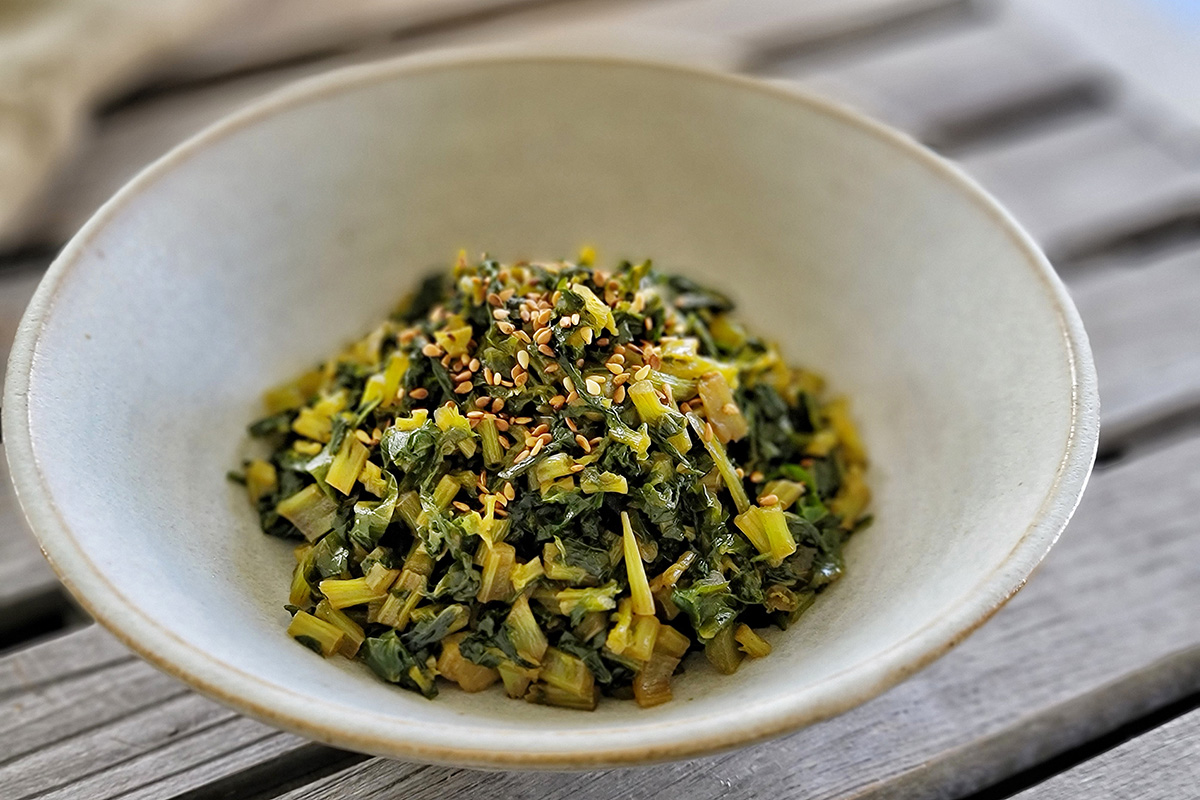
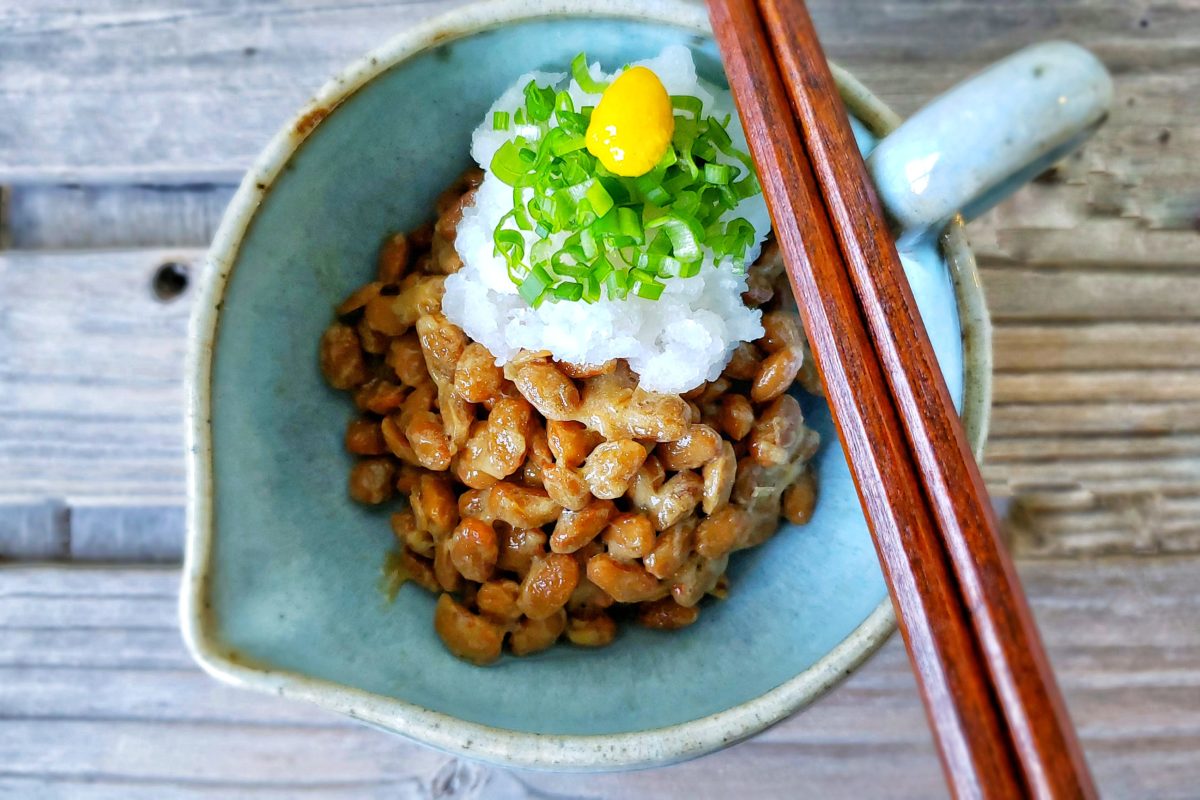
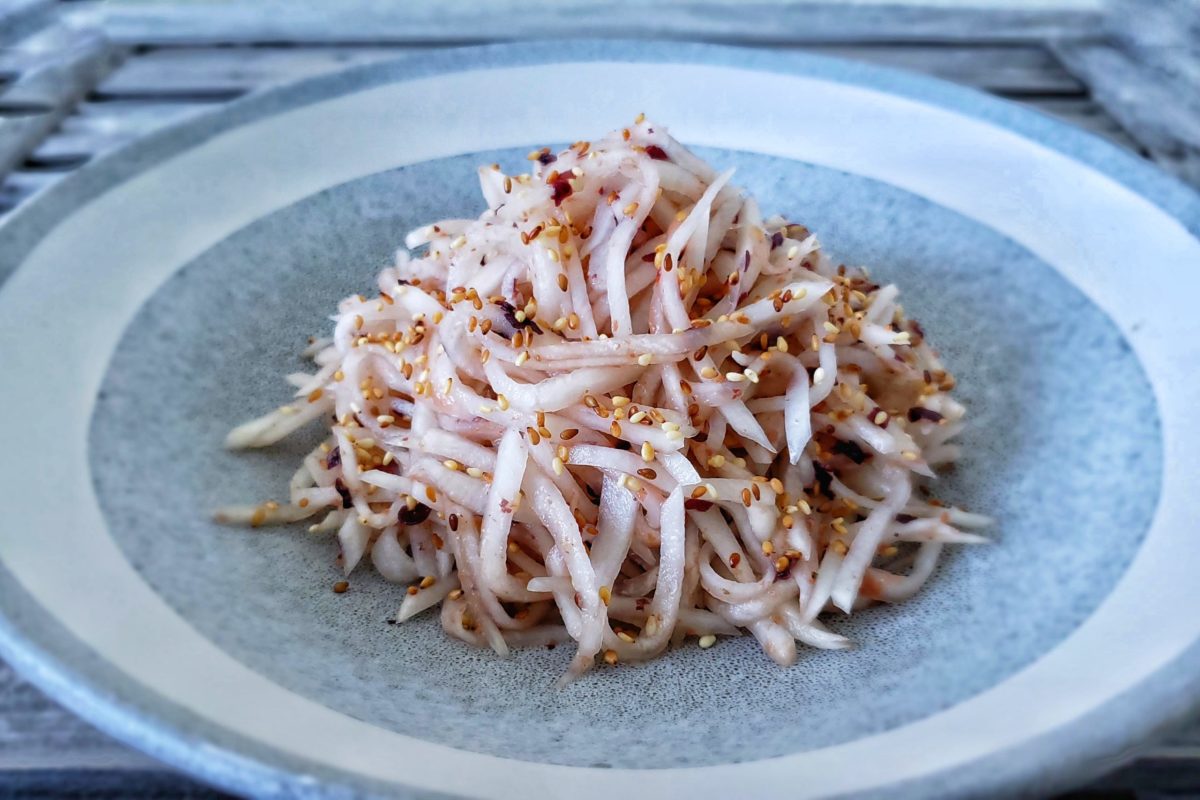
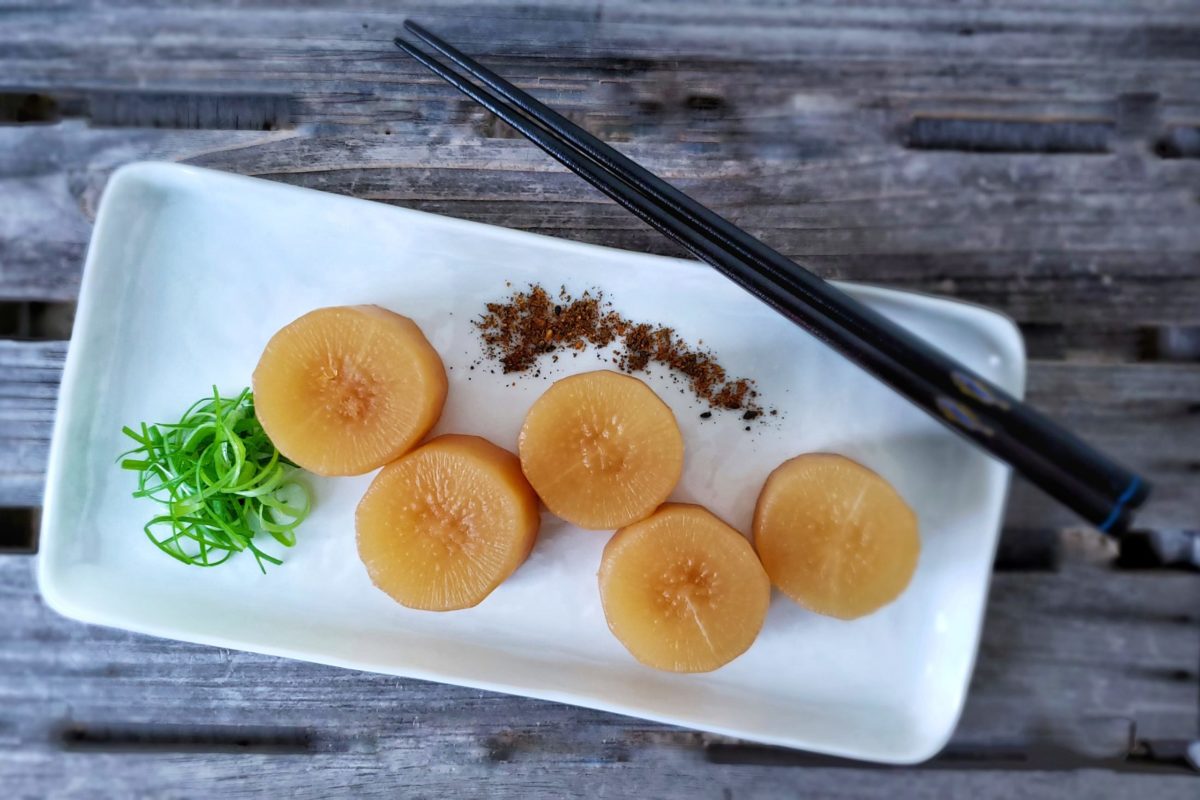
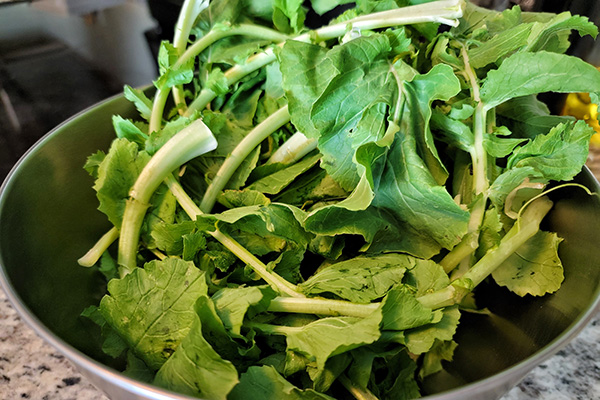
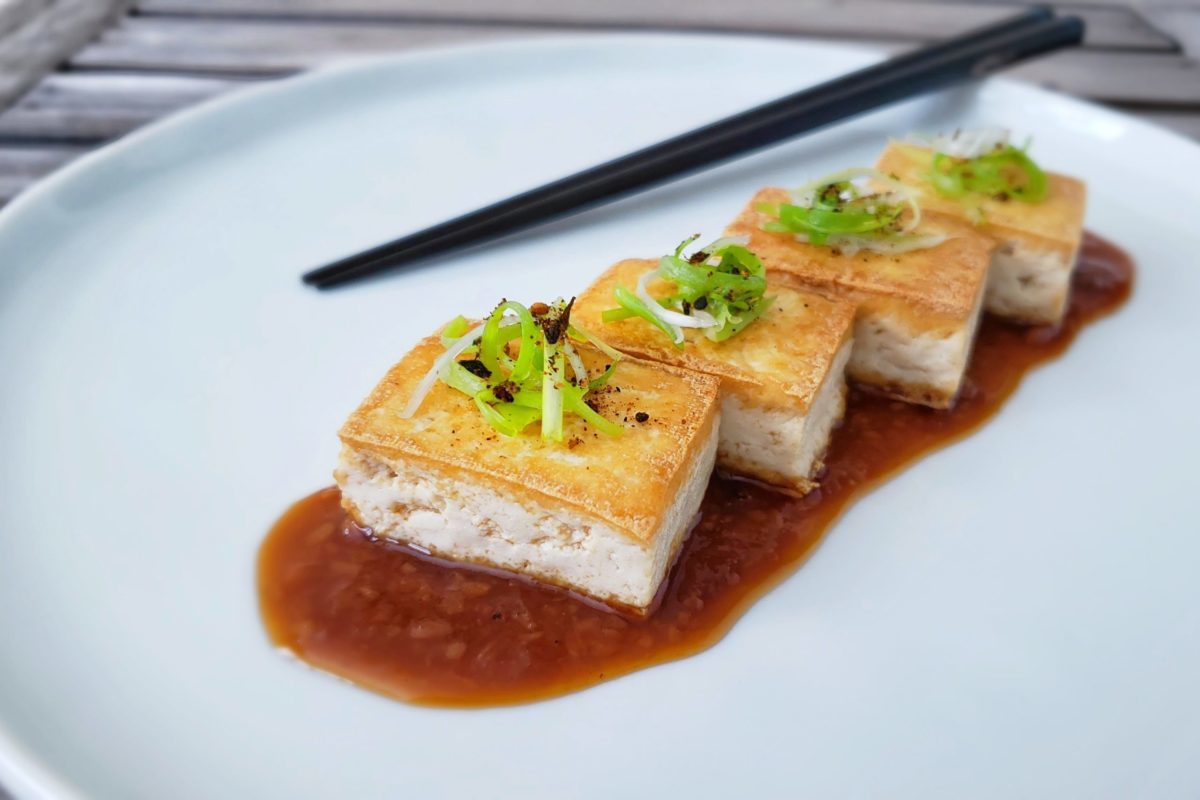
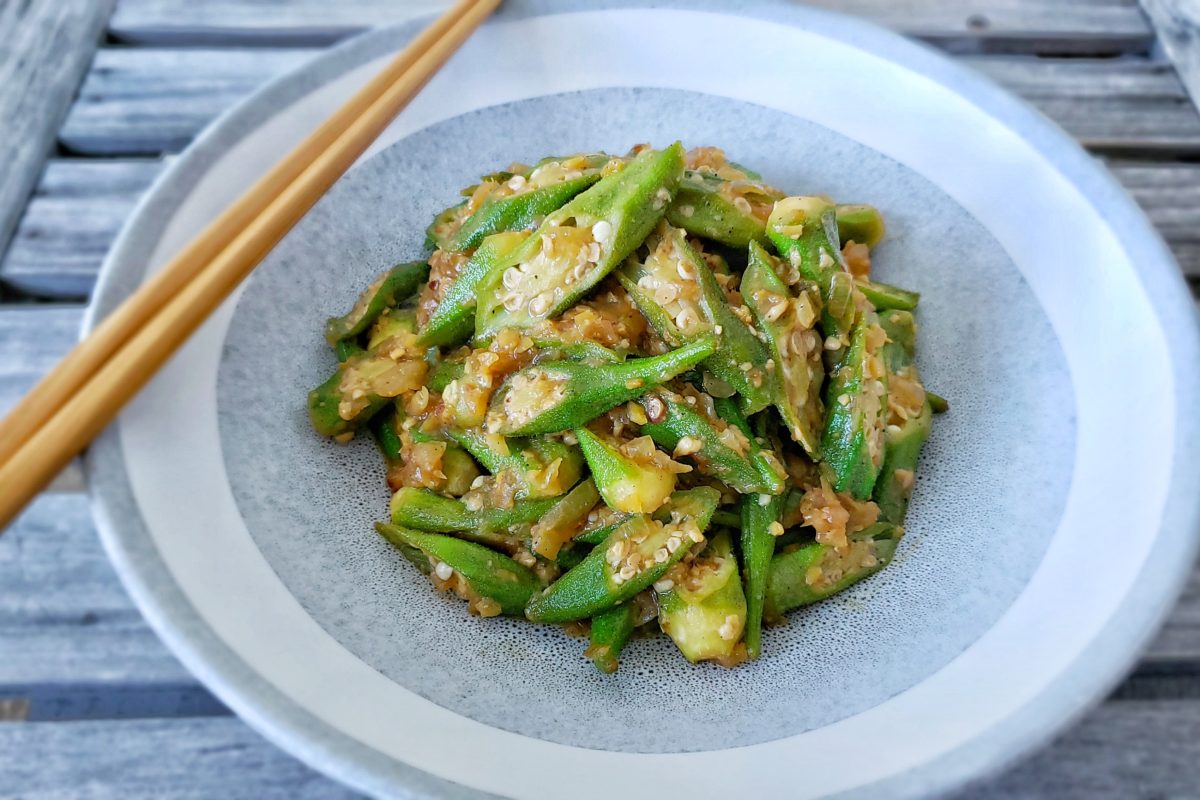
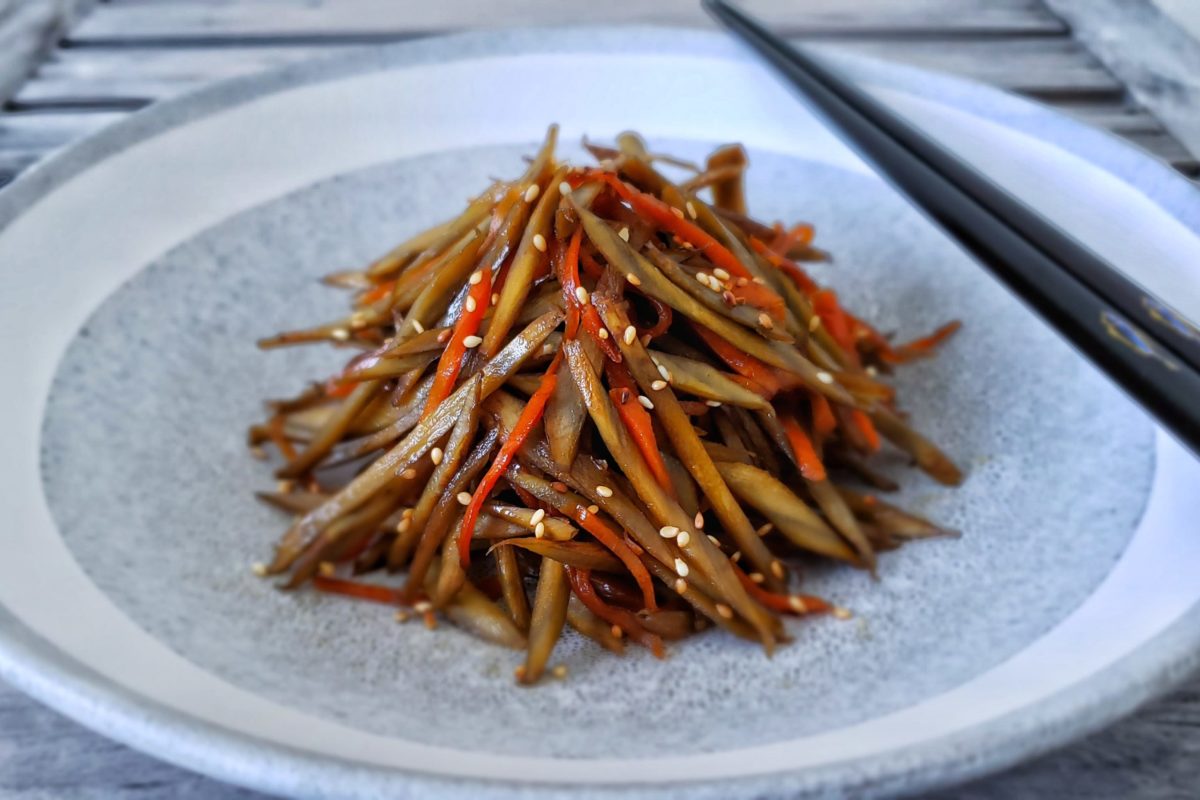
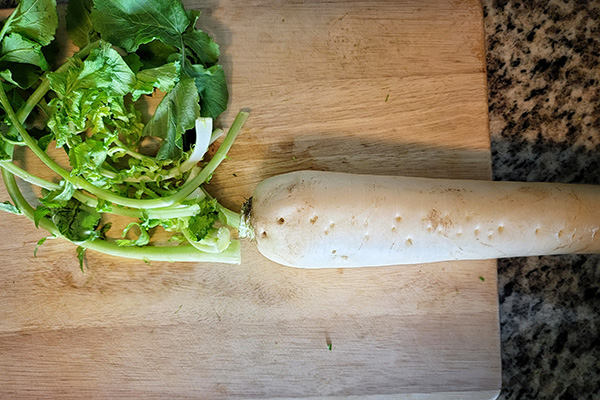
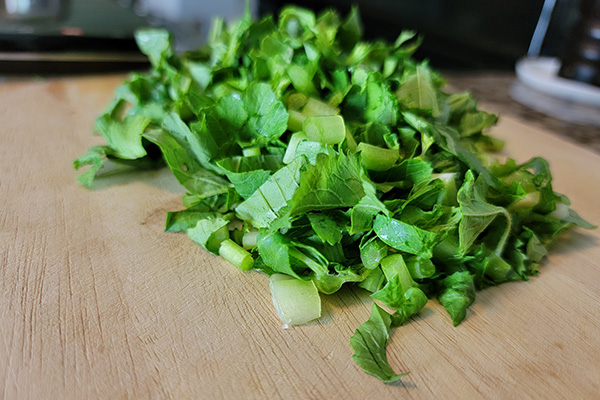
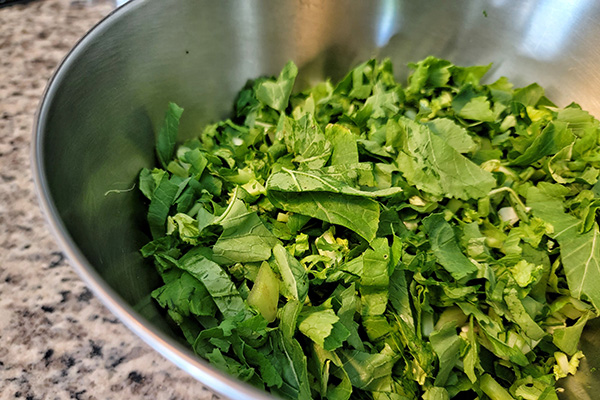
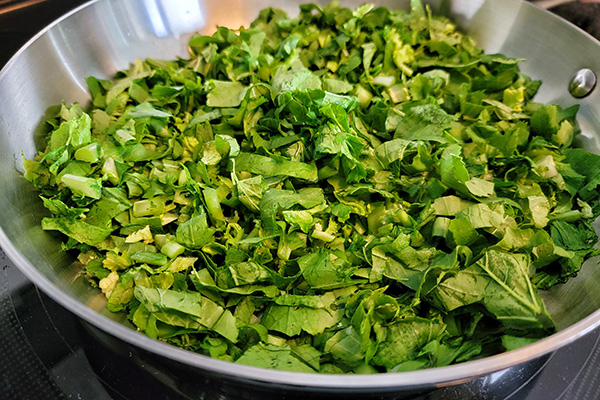
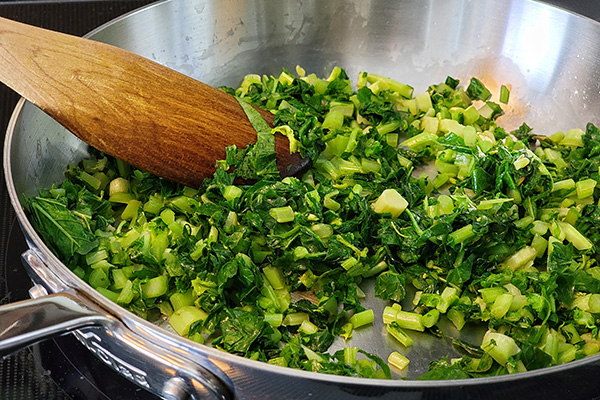

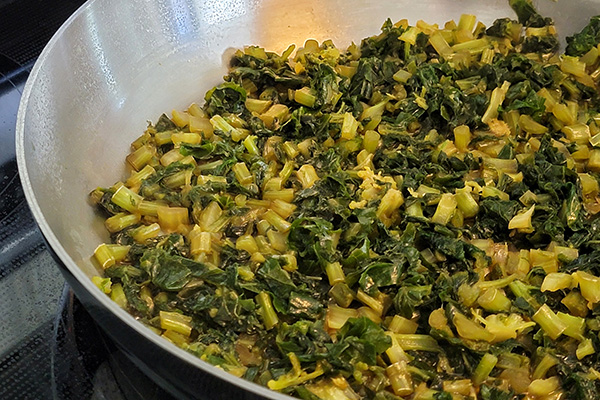
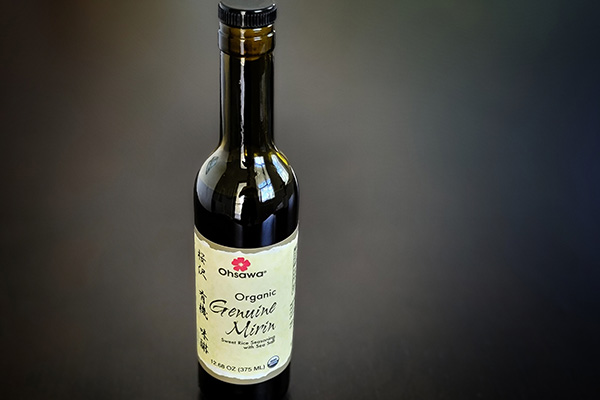
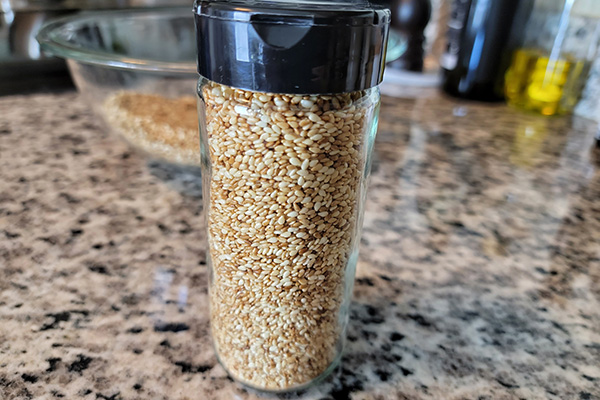
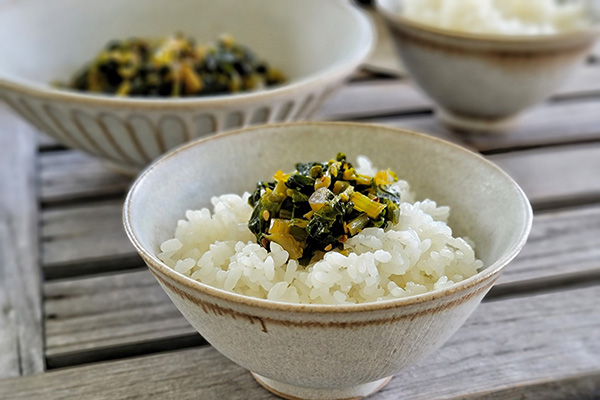
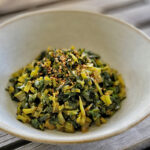
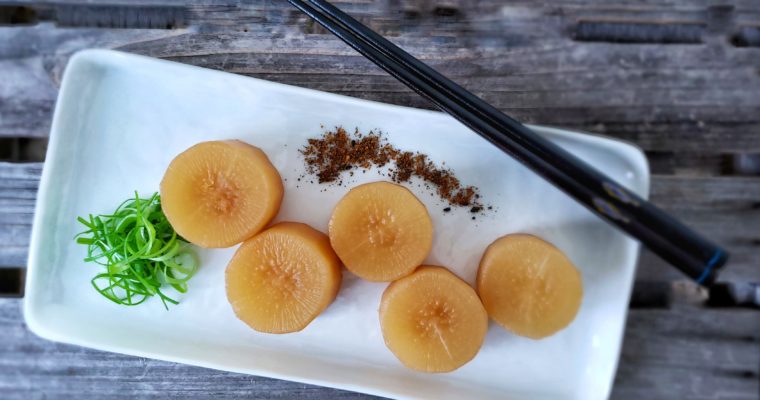
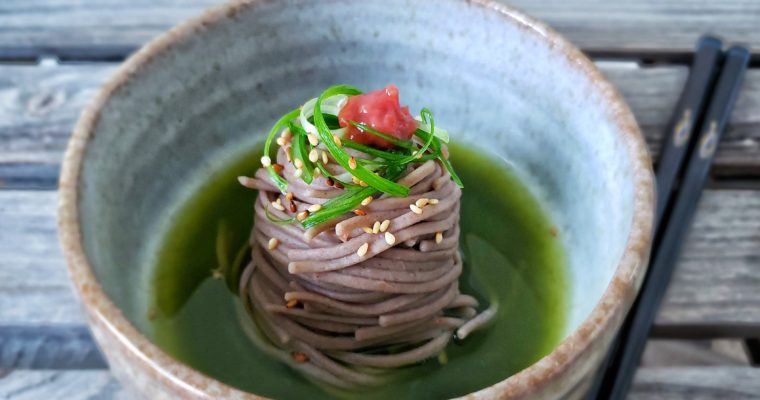
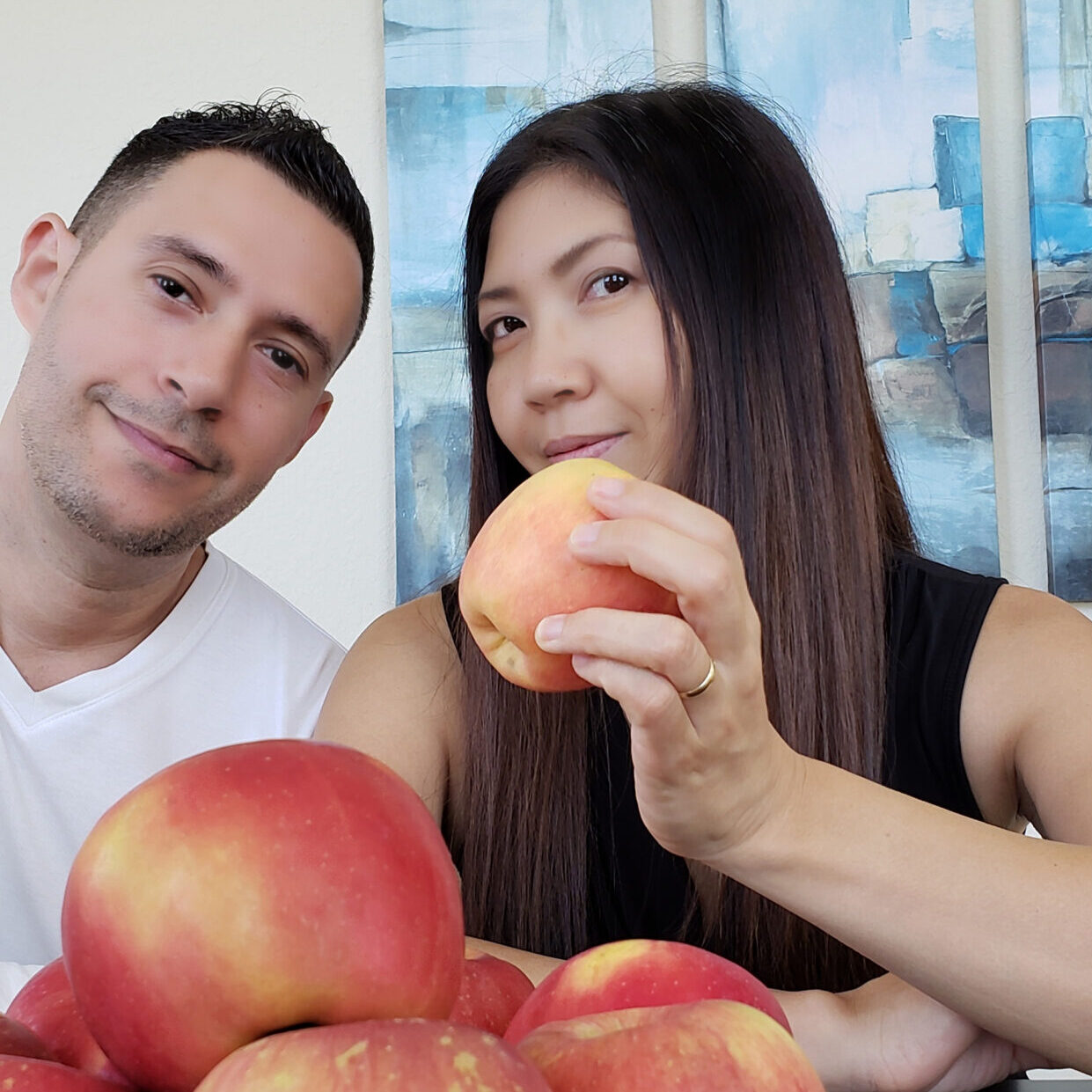

![CREAMY CHERRY TOMATO SAUCE PASTA (VEGAN)
[濃厚ミニトマトクリームソースパスタ(ヴィーガン)]
By @plantbased_matters
Recipe link in bio or at plantbasedmatters.net
Creamy Cherry Tomato Sauce Pasta (vegan) would be a perfect comfort food to make when sweet and juicy cherry tomatoes are in season. Cherry Tomato season is right around the corner, so definitely save this recipe and enjoy this satisfying dish!
This vegan creamy tomato sauce has no dairy or cream at all (not even plant-based milk or nut milk), but it's very rich and creamy and insanely tastey!
#pasta #pastapasta #veganpasta #tomatosauce #cheese ##vegancheese #pastalovers #parmigiana #parmesan #healthiswealth](https://plantbasedmatters.net/wp-content/plugins/instagram-feed/img/placeholder.png)
1 thought on “Sweet & Savory Daikon Radish Leaves”